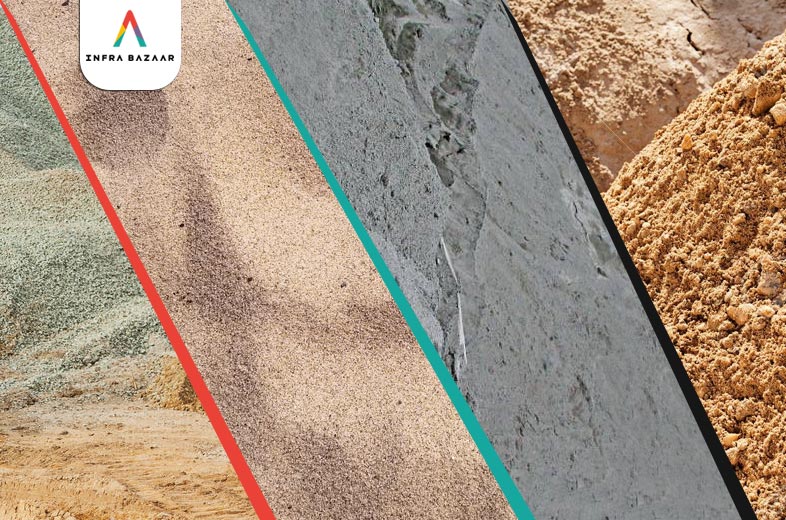
Posted By:Infra Bazaar
Sand has been an integral part of the construction industry even during ancient times. It’s diverse nature, texture helped reap many benefits in the construction industry.
In this blog, we take a look at some of the different kinds of sand that exist and their purposes in construction.
Types of Sand
1. Concrete Sand
This type of sand is made from crushed concrete. It is produced by crushing the sand in the quarry and then filtering out the large and uneven rocks. Concrete sand is a common component of asphalt mixtures and cement used to fill voids between coarse aggregates, and also provides fundamental stability to infrastructures.
2. Pit Sand
This type of sand is known for its excellent binding properties and is obtained naturally from deep pits. They are coarse, sharp, and angular grains that appear red-orange in color due to the presence of iron-oxide. Since there are no salts in this sand, it doesn’t react with moisture and provides superior binding.
3. River Sand
River sand is natural sand that is obtained in river beds. It is a smooth textured and fine-grained sand used in constructions. They do not require too much water as they have moisture content in them. They are typically used in masonry work and concrete, but also can be used for CC, plastering, and much other brick or block works.
4. M-Sand
They are artificially manufactured sand which is also considered a superior alternative for river or natural sand. Due to the high depletion of rover sand, M-sand is used as an eco-friendly alternative and offers the same properties as that of rover sand. It is produced by crushing huge granite rocks and consists of no silt content or any other impurities
5. Utility Sand
They are produced from high-quality quartz rocks and are used in several construction projects. They provide excellent compaction and mechanical properties due to their uniform texture and fine-grain shapes. Utility sand is non-reactive in nature and can thus, be used in corrosive environments. Apart from their mineral composition they provide good stability.
6. Fill Sand
As the name suggests, this type of sand is used as a filling. They are produced from sand and aggregates and consist of fine rock particles Due to their composition, these make the perfect base material for concrete, paving, and filling large holes.
Sand has been a prominent part of the construction industry ever since its inception and still continues to do so. While choosing sand for your construction project, it is important to understand its purpose, properties, and the benefits they provide.
#sand #construction #typesofsand #concretesand #pitsand #riversand #Msand #utilitysand #fillsand #constructionmaterials